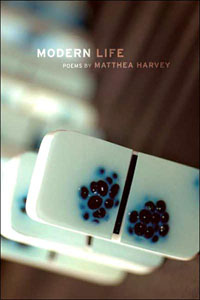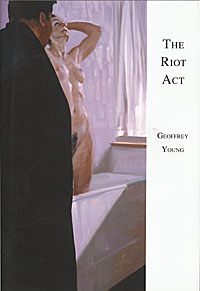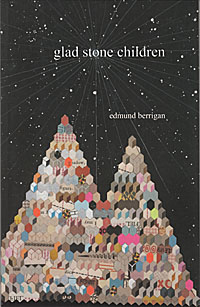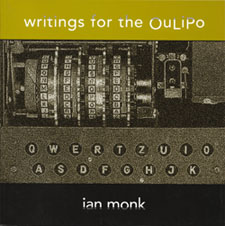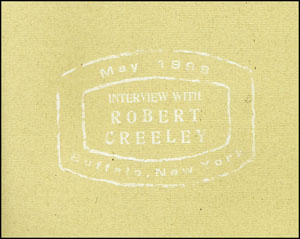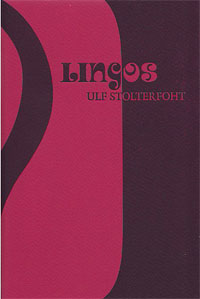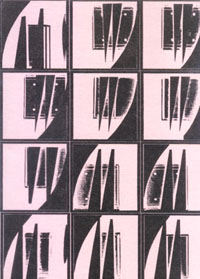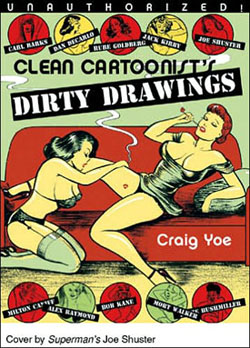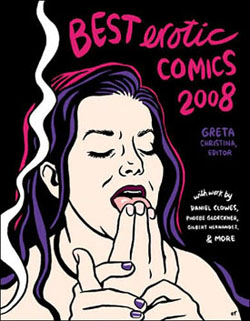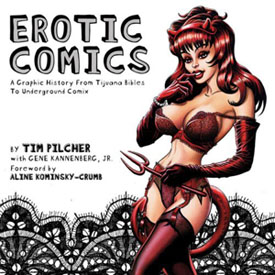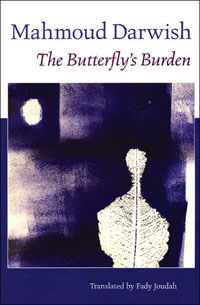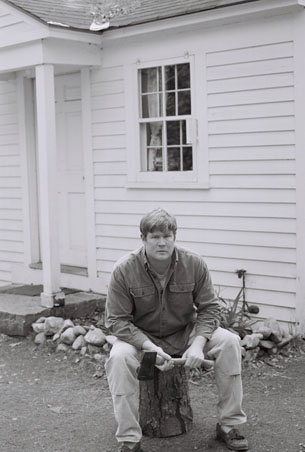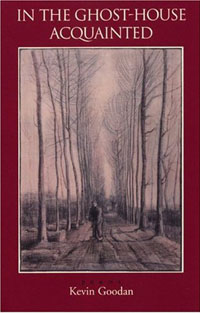by Kimberly Burwick
The best place to get Kevin Goodan to discuss his poetry is where he’s most comfortable—at home, in nature. Goodan is currently the resident writer at the Robert Francis House in Amherst, Massachusetts, or “Fort Juniper.” He’s in good company with the many writers who have lived there; poets such as Jack Gilbert and Linda Gregg have walked Fort Juniper’s modest three acres and have resided in the 20’ x 22’ cabin built of hurricane pine in 1939. Outside the cabin, Goodan sharpens his swede saw and stacks the quickly disappearing woodpile before we begin our interview.
Goodan grew up on the Flathead Indian Reservation in Western Montana; though not native himself, his stepfather and three brothers are tribal members. At the age of nineteen, he established himself in the U.S. Forest Service and worked as a firefighter for ten years. Goodan moved to Amherst in 1999 to attend the University of Massachusetts MFA program. His first book of poems, In The Ghost-House Acquainted (Alice James Books, 2004) won the The L.L. Winship/ PEN New England Award in 2005, and a chapbook, Thine Embers Fly, was published by Factory Hollow Press in 2007. His second collection, Winter Tenor, will be published by Alice James in May 2009.
Kimberly Burwick: Kevin, when I first read your work the thing that struck me was the way you use the idea of distance. Seeing as you’re from Montana, do these things have any kind of relationship?
Kevin Goodan: I think it’s a pretty strong relationship, because in a way I’m not where I would actually like to be. So there’s a sense of exile, I think, in the poems. I love it out here, but there is a distance from things that are known. Or things that are cherished. Looking back on it, this probably plays a major role in the poems.
KB: Do you think these poems could have been written back in Montana?
KG: I don’t think they could have been written in back in Montana. I think I had to leave or else my writing wouldn’t have matured. I kind of knew that. I had had good teachers in Montana, but I had them as teachers for six years. It was time to go somewhere where things were different and strange.
KB: Was New England the first place they were different and strange or did you travel to other places first?
KG: I went to other places; I spent time in Ireland, and Northern Ireland, and a little bit in Wales. But that was before I felt confident in writing. When I decided to come to Massachusetts I knew that I needed to write, that I had it in me to write, I just needed to get out of Montana and away from family. It’s hard to do anything when you have 300 relatives watching over you in a small town.
KB: Your poems also invoke the idea of a vanishing point—sometimes explicitly, as in “If I’m Not A Garden.” Is there a relationship there?
KG: Well, I wanted to write the way painters paint, and they all have vanishing points. At least the painters that are important to me, like the Impressionists and so forth. And so that’s what I wanted to do with language. I wanted to paint the landscape as I saw it. Like the way Van Gogh painted Saint-Rémy.
KB: Aside from the actual, tangible world, do you write towards a theoretical vanishing point?
KG: Looking back at things you can say this is what I was doing here or this is what I was doing there, but when I’m writing, I don’t know. I’m trying to push the language as far as it can go and trying to get to something that’s unsayable in the poems, somewhere. And maybe that’s the vanishing point, that place where the essence of language is beyond language.
KB: You talk about pushing language toward the unsayable, but I’ve also noticed you have an amazing capacity to give language to the natural world—as in, for instance, “In The Lexicon Of Rain.” How do you envision language in such poems?
KG: I don’t know if I can answer that.
KB: Let me put it to you differently. Without getting into something like personification, do you think the things you see outside—trees and plants, for instance—have their own kind of language?
KG: Trees do have a language. Which isn’t any “new-agey” idea—they actually do communicate. In a forest when one tree gets infected by some type of bug or spore it actually sends off pheromones to the other trees that tell them to beef up their immune system. It’s not a codified language, but they do communicate.
KB: Is that something you’re trying to tap into?
KG: A little bit. Other ways of knowing the world.
KB: In your readings, you talk a lot about a woman who was the last known speaker of a particular language.
KG: That’s Vi Hilbert. She was the last speaker of Skagit, which is part of the Salishan language base, and I grew up on the Flathead Reservation, which is the eastern-most tribe of that language group. They're called Flathead or Salish; my stepfather is a tribal member.
KB: Did he teach you Salish when you were a kid?
KG: No, he didn’t. He was part of the generation where the parents did not teach their kids Salish because it was easier for them not to know it. If you know anything about the history of going to Catholic schools and so forth, then you know that if the kids spoke native languages, they were beaten. And so to save their children from that, the parents decided to raise them so that they would only know English.
KB: Looking back, do you wish you were taught Salish?
KG: I don’t know if it would have helped me; it may have confused me more, because obviously I’m the whitest thing on the face of the earth. I knew that I wasn’t ever going to be a member of that culture. Besides, I have a hard enough time with English as it is.
KB: You do, though, have a love of Latin.
KG: Yeah, that comes from being Catholic.
KB: How does that work its way into the poems?
KG: Danged if I know, I try to keep it out! Sometimes there’s terminology in other languages that are the things that work in the poem, and that idea doesn’t transfer well into English. So, that’s why I borrow terms from Latin or German or Portuguese.
KB: Have you seen a Latin mass?
KG: I did once when I was a kid and it scared me.
KB: When you put Latin into a poem, are you trying to preserve something in that language even though it’s a dead language?
KG: Maybe, but I think with the ecumenical history of Latin, it ups the ante for the rest of the poem, because the rest of the poem has to be able to hold up to those terms.
KB: It doesn’t seem like artifice, though, it seems related to the ways you explore death—your use of Latin terminology ends up being an artifact of death along with the other images.
KG: Sounds good to me. I don’t really think about how I’m using other languages when I’m writing the poem. I just put down what is available to me.
KB: Does it ever make you feel strange, talking about the poems?
KG: Yeah. I’ve never been good at theoretical discourse or analytical this and that. That’s never been important to me. What’s important to me is what happens in the work, and growing with the poem or the story or the novel that I'm reading. And trying to take from that something that I can use in my life.
KB: You say you don’t think about the poem as you’re writing it, but your poems have a lot of energy, they’re incredibly dynamic. So what happens in the body as you’re writing? Is there a rush of any sort?
KG: Oh, I think there’s a rush; there’s also a lot of coffee that’s been drunk beforehand. In some of the poems, to borrow a term, there has to be some sense of rapture. It doesn’t happen in every poem, but I strive toward that. Maybe the poem at the end gets to a place of stillness and maybe rapture works into that, maybe rapture is a kind of paralysis of the spirit. But that’s what I’m working toward, at least inWinter Tenor.
KB: In your chapbook, Thine Embers Fly, you have a poem titled “The Flame-Front I Maintain Is For This Tinder Only.” This is a word that comes up again and again here and in many of your poems. What’s so special about that word?
KG: It’s this. It’s what is here, now. What is, in the poem, trying to pinpoint. That word is like a pin holding things down. This thing. This tinder. This. It makes the transitory world for a moment hold still. At least in the poem.
KB: Also in that poem you write, “The harsh, the true, / A brightness not the world, / A blinding, like voice surging through keys.” How does music figure into your writing life?
KG: I’m constantly listening to music when I’m writing, and sometimes the mood of the composition I’m listening to helps lead what I’m writing or allows it to contain the mood of the music. In that regard it’s an integral part of what I do. I can’t write in silence and I can’t write when there are random noises around, but with music I can. And I also pay attention to—because I used to play traditional Irish music—certain aspects of the music.
KB: Is it Irish music you listen to when you write?
KG: No, I usually listen to something like Arvo Pärt.
KB: It’s an interesting poem because it ends, “where the fire feasts upon the patterns of other/weathers,” so, you start with “This Tinder Only” and then you get to “other weathers.” How does that transition occur?
KG: It’s like reaching for what some people call the ineffable. The poem works towards trying to catch that unsayable thing. It begins here, because everything begins here, in this, and then moves towards that. So the poem is a movement outward or inward to the idea or realization of other weathers, that there are other things out there that we can’t see. Even though we can’t see it or codify it, it dominates our lives.
KB: In another poem, “Come Take These Words From Me,” you write, “I look out and know my place, / I, because of love.” It seems there’s a dialogue going on between I and love.
KG: I think most poems are a situation of dialogue even though the person or the thing or the non-thing that a writer is speaking with might not be responding. Dickinson once called her poems her “letter to the world.” There weren’t any replies back.
KB: Weather is really important in your poems. What your first memory of weather?
KG: Sitting after a rainstorm outside my window on the roof of the porch listening to the semi trucks go by and whine on the wet pavement.
KB: How old were you?
KG: Three.
KB: In your poems weather tends to be something that brings the soul into place. Was weather ever something traumatic?
KG: Well, when you fight fires weather is pretty important because if you don’t pay attention to it, your soul’s going to be crispy. So weather has always been an important thing for me. I’ve been lucky to live a life where it is important, where you can’t change your environment into something more friendly to you. And it does change, it’s not always nice.
KB: I’ve seen you get really excited about storms. Is there something about watching weather patterns come into being that works its way into the poems?
KG: Well, I think that storms that have a certain violence to them make life more tangible. They alter things. Lightning certainly alters not just the thing it strikes, but everything around it. Or a really strong wind or a blizzard or something like that. So yeah, I pay attention to those and I like when there’s turbulence because it changes the constant.
KB: You joined the U.S. Forest Service in Montana at the age of nineteen. What were the circumstances that lead you there? Did you think of this as a long-term career?
KG: I started doing it because they were short of people in 1988, because of all the fires in Montana. And also, someone once told me that I would never be able to fight forest fires, that I wasn’t strong enough. So I decided that I would prove them wrong. Initially, I didn’t think of it as a long-term career, I thought of going into teaching and this would be one way to pay for college.
KB: The Lolo National Forest in Western Montana is over two-million acres, and has an eco-system that is influenced by both continental and maritime climates. How do you approach a fire which fuels off of such diverse forest land?
KG: Very carefully! It depends on what the fuel type is. If you’re in an area that has a lot of flashy fuels, but also has some kind of canopy, some sort of overstory that’s continuous like an open pine stand and it’s on a steep slope like the Mann Gulch Fire, you have to be very, very careful. You wouldn’t think so, but you do. In the thicker, more dense areas, you approach the fire differently, because it will be slower moving. Unless you’ve got a storm cell sitting on top of you.
KB: What did you do in the off-season?
KG: Starved. And washed dishes. Went to school. And went to Ireland for a while.
KB: How did these winter experiences tie in with your fire life?
KG: I don’t know if they really tied in until later. In the midst of these things I was thinking they were all separate aspects of living, and now, they are all sort of combined. I think I went to Northern Ireland for the violence and because I needed the adrenalin that fire gave me. I needed the risk. I needed that thing going on in the brain. And that’s why I went there, to prolong that endorphin high.
KB: Growing up in Montana, you’ve had many long, long winters, but you don’t seem to be a person who minds that. What happens in winter in terms of writing?
KG: Since you don’t fight fires in the wintertime, winter is a time for writing. And initially I was forced into that, because of fighting forest fires and so on. So it’s become the habit. Most of the work gets done in the winter.
KB: I know that you were an only child until the age of nine, when the first of your half brothers came along. In what ways does being an only child figure into the writing?
KG: I don’t know if it figures in or not. That’s a good question. My brothers are all in the military and I’m sort of the weird one doing what I’m doing, so in a certain respect I always felt like I didn’t really fit in. And maybe that sense of “outsiderness” has helped me with whatever I do with writing.
KB: You mention the word “brother” a lot in your poems. Is this a reference to your actual family or is it something more that that?
KG: It is probably more than that… at certain points I am speaking through the poem to my brothers, but often it’s about something larger than immediate family. I think in certain respects we all are connected with each other. Even the things that aren’t human, there’s always something to connect with.
KB: You weren’t able to join the military.
KG: No, I wasn’t. My lungs kept me out. They said my lungs weren’t fit for military service, so I went and fought forest fires.
KB: I don’t know if it’s going too far to call you a sniper of language, but in some ways it feels like you ambush the natural world.
KG: Don’t let the earth-first folks know that! But that could be. I’m trying to capture things as I see them, and so in a way I suppose you do have to ambush the world, to try and capture it at that moment as much as you can—to make it visible, to make it visceral, to make it tangible for the reader.
KB: Take us into your writing room. What do you have in your writing space?
KG: There’s a desk, or a table. A window. A typewriter. And some paper.
KB: You don’t type on a computer?
KG: No. I use an old 1923 Royal portable.
KB: Why?
KG: Because I like the physical action of typing and hearing the keys hit the paper. And it also makes you focus more on the words you’re going to put on the paper, because if you make a mistake, you can’t just hit the delete bar. You either have to take the page out and start over, or you have to use the wonders of white-out. It makes me focus more and it makes me be more intentional with the words I put on the page.
KB: Do you write by hand as well?
KG: I do. I usually write down notes and fragments of things. And at a certain point, when I feel there might be enough fragments that I can put together that will lead me somewhere—maybe they won’t even be part of a poem, but they will lead me somewhere—then I will sit down at the typewriter and type.
KB: When you finish a poem, do you feel exhaustion or relief that you can move on and do other things?
KG: It depends on the poem. The really, really good poems, the “god-given poems,” those make me exhausted when they come up, because they are few and far between. The other poems are kind of like doing your homework before you can go out and play.
KB: Before we began this interview, I saw you outside sharpening a saw. How does physical labor figure into writing?
KG: That’s important. I believe you should have a well-rounded life. I don’t want to just sit at a desk my whole life. But physical labor, like cutting trees or digging ditches, also lends itself to what I write about, which is the natural world or the occupations that have to deal with the natural world.
KB: Let’s talk about your first book, In The Ghost-House Acquainted. I’m wondering about the poem “Something Like Blood.” In many ways it seems different from the other poems in the book. It almost has the fragrance of springtime and trauma.
KG: Yeah, that was one of the first poems that I wrote as an undergraduate and it’s the oldest poem in the book, so it probably does feel different because it is the beginning of things.
KB: You have a line, “My mother touched my hand.” And towards the end of the poem the speaker says, “I tell myself I will act / man enough for my mother to kiss me / when I come home with nothing but my hands.” How does your mother factor into the poem?
KG: Well, it’s really a poem that deals with a bad father. A mother is always going to accept what you do even if you fail—that’s what mothers do. And so for me to go fishing and come home with nothing to show for it, and yet to be strong enough to accept that and strong enough to accept a mother’s tenderness at a moment of failure, that to me was important, because I was starting something that I didn’t know if I was going to fail at or not: this whole writing business.
KB: In a lot of the poems it’s as if you take the reader by the hand and give them a pair of binoculars and have them focus specifically on something, and then immediately you change perspective and have them focus on something else. If you were a reader of one of your poems, how would you put together these images?
KG: I think it’s a situation of juxtaposition. Your mind puts together the things that follow each other. So once I understood that, or once anyone understands that, the poems can go wherever they want and the reader will follow even if there’s no narrative; if there’s just images, the mind will create a story about those images. It might be an irrational story, or a story that even the reader can’t understand or put into words, but it’s there, they all link together.v
KB: Almost all your poems deal with the world in a really tangible way, but “Trees of Heaven” gives us an alternative landscape. Is it a realistic poem?
KG: Parts of it. Sometimes snow is not very nice. And sometimes in situations of mourning you do lay everything out that remains of a person.
KB: The “you” in that poem feels particularly assaulted. Was that your intention?
KG: I don’t know… sure, I’ll go with that. I didn’t have a particular situation in mind, but I had a friend in high school that got shot and killed in a bar fight, and it could have been that. It’s slowly been leaking into the poems that I write, he has. And so maybe that was the impetus.
KB: The “you” in many of your poems seems like it could be not only many different people, but a divinity of sorts. Is it a multifarious you or is it ever specific to any person?
KG: Well, I think you hit upon the answer, that it’s multifarious. It’s a blank or a vague you—it’s you the reader, but it could be other things as well. You’re not able to pin it down all the time.
KB: In many ways you collapse the distance between the reader and the speaker.
KG: I hope so. That’s what I would like. I would like them to see the things that I put on the page the way I saw them when I put them on the page.
KB: However the “I” in your poems is arguably stronger than the “you.” Is it always you or an imagined speaker?
KG: I like to say that it’s me, I like the fact that you’re making me stronger than you. It could be another situation, but usually it’s me. I think.
KB: In The Ghost-House Acquainted is the title of your first book. It’s clear that you become acquainted with death in the poems, but what else do you become acquainted with throughout the book?
KG: Life. Well, there’s always the search for things beyond the world. Often times I feel that maybe God is here, he’s just put down in shorthand and we have to capture little pieces of him or his language, which is the natural world.
Click here to purchase In The Ghost-House Acquainted at your local independent bookstore

Rain Taxi Online Edition, Summer 2008 | © Rain Taxi, Inc. 2008
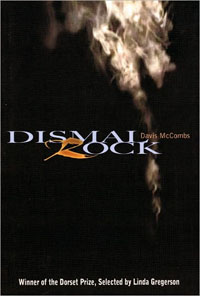 Davis McCombs
Davis McCombs

